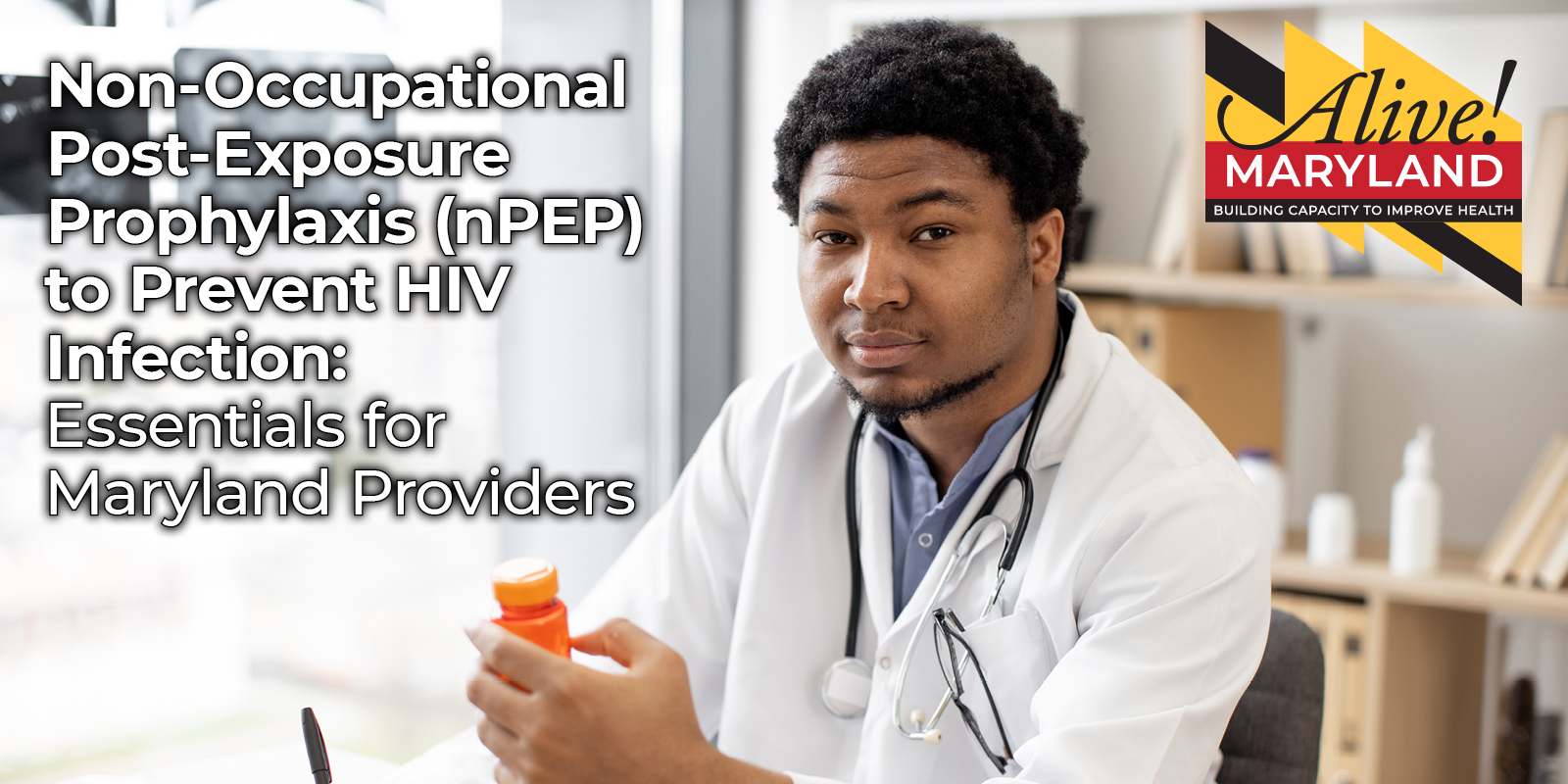
Non-occupational Post-Exposure Prophylaxis (nPEP) to Prevent HIV Infection: Essentials for Maryland Providers
Launch Date
September 26, 2023
Expiration Date
September 26, 2024
Credits
1 hr
AAPA, ACPE, AMA, ANCC, CPE, APA, IPCE, ACE
Cost
There is no fee for this educational activity.
Universal Activity Number
N/A
Subject Matter
Activity Type
Non-Occupational Post-Exposure Prophylaxis (nPEP) for HIV prevention is the use of antiretroviral drugs as soon as possible after a high-risk exposure to HIV. Increasing awareness of and access to nPEP leads to fewer HIV diagnoses and is an important strategy for Ending the HIV Epidemic. This webinar will cover key elements regarding Non-Occupational Post-Exposure Prophylaxis (nPEP) management. The faculty also will review the accompanying Alive! Maryland nPEP toolkit for Maryland providers.
Educational Objectives
After completing this activity, the participant should be better able to:
- Describe 3 indications for nPEP use
- Identify the key baseline and follow up clinical/laboratory assessments for nPEP
- Explain when and how to prescribe nPEP to PrEP
- Identify resources and guidelines for prescribing nPEP
Faculty
Chris Bositis, MD, AAHIVS is Clinical Director for the National Clinician Consultation Center, and Associate Professor of Family and Community Medicine at UCSF. At the NCCC, he leads a team of clinical consultants providing expert advice in the areas of HIV prevention, and treatment; perinatal A family physician and HIV specialist, he has co-authored the HIV prevention chapter for the last 4 editions of the American Academy of HIV Medicine’s Fundamentals of HIV Medicine textbook. He is a graduate of the Yale School of Medicine and did his family medicine residency at Brown University/Memorial Hospital of Rhode Island.
Related Resource
The nPEP Toolkit to Prevent HIV Infection is an Alive! Maryland resource that highlights key elements of Non-Occupational Post-Exposure Prophylaxis (nPEP) management. PEP is effective in preventing HIV infection when administered rapidly—ideally within 2 hours and no later than 72 hours—after an exposure.
